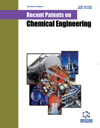Recent Patents on Chemical Engineering - Volume 4, Issue 1, 2011
Volume 4, Issue 1, 2011
-
-
Advances in Metal-Organic Frameworks for Heterogeneous Catalysis
More LessAuthors: Vanesa Calvino-Casilda and Rosa Maria Martin-ArandaMetal-organic frameworks (MOFs) materials feature structures exhibiting mainly huge specific surface areas and pore volumes making them interesting for several applications. Originally, MOFs materials were used for storage of hydrogen or hydrocarbons although quickly the field of their possible applications has been extended to other important fields such as gas purification and separation, and sensor techniques among others important applications. However, the most promising field which has recently attracted the attention of many researches has been the performance of MOFs in catalytic applications by introduction of catalytically active sites into the framework. Nevertheless, for this purpose most of the MOFs structures that have been published lately suffer from undesired chemical and/or physical properties which prevent their use under real reaction conditions e.g., insufficient thermal stability in air, lack of tolerance towards moisture and many organic solvents. Therefore, the stability of these materials under real reaction conditions has to be considered before any application and particularly before catalytic applications. However, the use of MOFs as heterogeneous catalysts has shown a significance increase in the last two decades as they have been considered as an eco-friendly alternative for catalysis. This patent review highlights the advances in metalorganic frameworks as heterogeneous catalyst in a wide range of applications.
-
-
-
Applications of Mesoporous Materials
More LessAuthors: Leonard Chia, Shoucang Shen, Wai Kiong Ng and Reginald B.H. TanWith the advent of structured mesoporous materials in the 1990s, research and development in application areas ranging from catalysis and active ingredient delivery to separation and purification have gained momentum. We review here the recent patents in these and other emerging areas.
-
-
-
Waste Treatment by Supercritical Water Oxidation
More LessAuthors: Jing Guolin and Luan MingmingSupercritical water oxidation (SCWO) is a new oxidation technology that utilizes supercritical water reaction to destroy the configuration of matter. Organic waste is converted to harmless gaseous or liquid substances such as CO2 and H2O. Thanks to its unique technology advantage, it has a rapid development in the recent years, and becoming a potential and green technology of wastewater and organic waste treatment. This paper focused on SCWO technology and apparatus, and reviewed achievements on patents of wastewater and organic waste treatment by SCWO. Eventually, this article prospected the development trend of this new oxidation technology.
-
-
-
Recent Solutions for the Abatement of Hydrocarbon Emissions During the Cold Start of Light Vehicles
More LessAuthors: B. Puertolas, M. V. Navarro, J. M. Lopez, R. Murillo, A. M. Mastral and T. GarciaDuring the last twenty years the number of patent publications in the field of the control of hydrocarbon compounds during the cold start period of a gasoline engine has strongly increased and seems now that the number of patents tends to increase during the following years. This fact has been related with increasingly stringent legislations all over the world which highlights the importance of developing efficient systems for the control of cold start hydrocarbon emissions. The technologies that show a higher number of patents are the hydrocarbon trap, the close-coupled catalyst and the electrically heated catalyst.
-
-
-
Polymers As Natural Nanocomposites: The Missing Opportunities
More LessBy G. V. KozlovThe treatment of amorphous glassy polymers as natural nanocomposites is proposed within the frameworks of the cluster model of polymers amorphous state structure. In this case local order domains (nanoclusters) are considered as nanofiller and polymer structure loosely-packed matrix - as nanocomposites matrix. It has been shown that nanoclusters relative fraction change influences on polymer properties in the same way as micro- and nanofiller contents variation in polymer composites (nanocomposites). The interfacial (intercomponent) adhesion nanoclusters - loosely-packed matrix level is close to zero at temperatures T< T'g; (where T'g is glass transition temperature of loosely-packed matrix). At temperatures T< T'g the perfect adhesion between nanoclusters and loosely-packed matrix is observed. The indicated interactions type is defined by butt-end and cylindrical surfaces area ratio of nanoclusters simulated as cylinders. There is also a dimensional effect, which is typical for all nanocomposites - at nanoclusters with diameter reduction lower than 1 nm the fast growth of elasticity modulus is observed. At perfect adhesion realization in temperature range of T< T'g the polymers elasticity modulus may be increased 5-6 times. In case of intercomponent adhesion still higher level realization (nanoadhesion) linear coefficient of thermal expansion can be reduced to on order of magnitude. In Some practical ways of polymers nanostructure regulation has been considered with the citation of some recent patents.
-
-
-
Patent Selections
More LessThe patents annotated in this section have been selected from various patent databases. These recent patents are relevant to the articles published in this journal issue, categorized by different chemicals, raw materials, materials, machines, design methods, chemical processes and techniques involved and related to chemical engineering.
-
Most Read This Month


